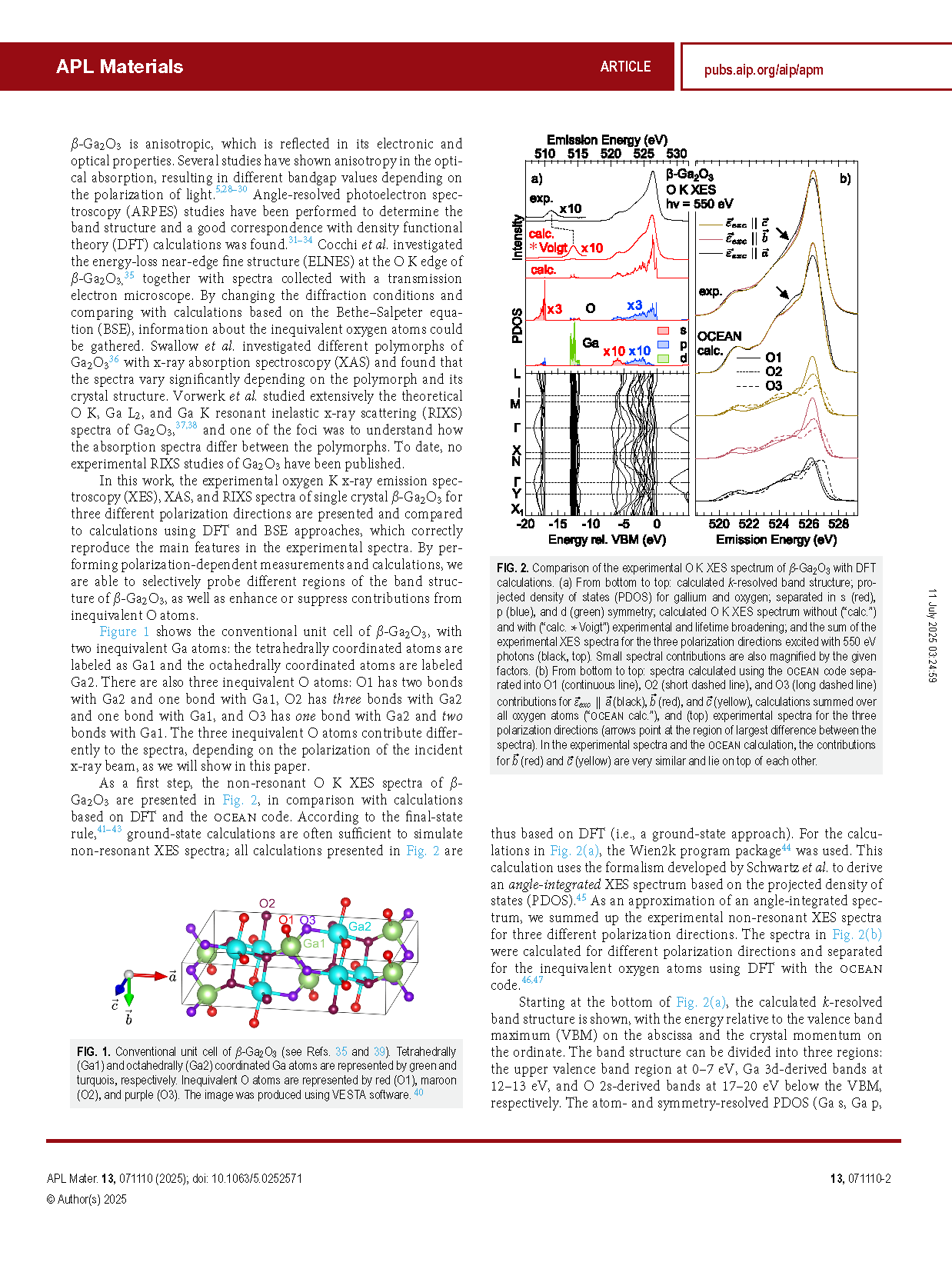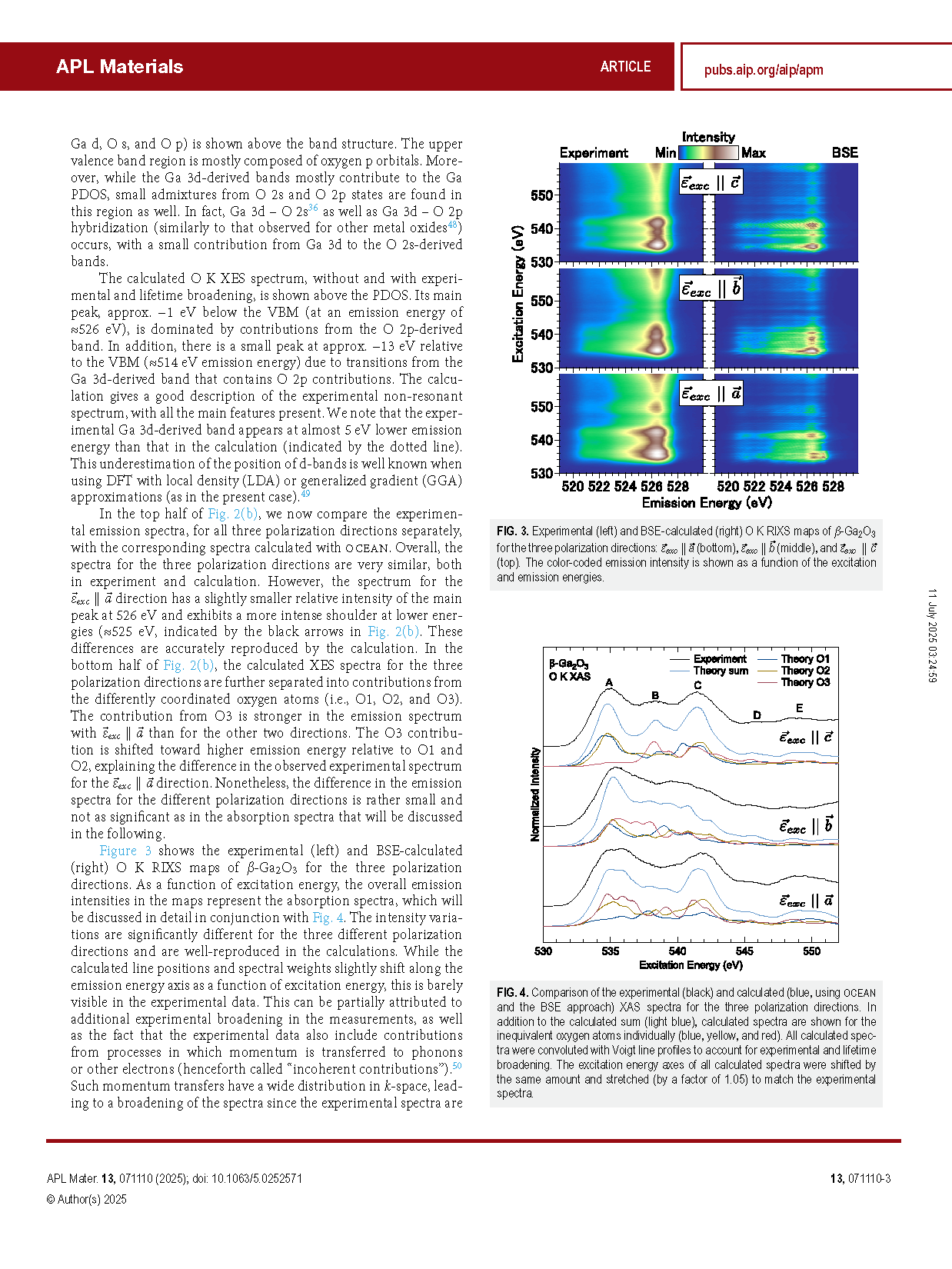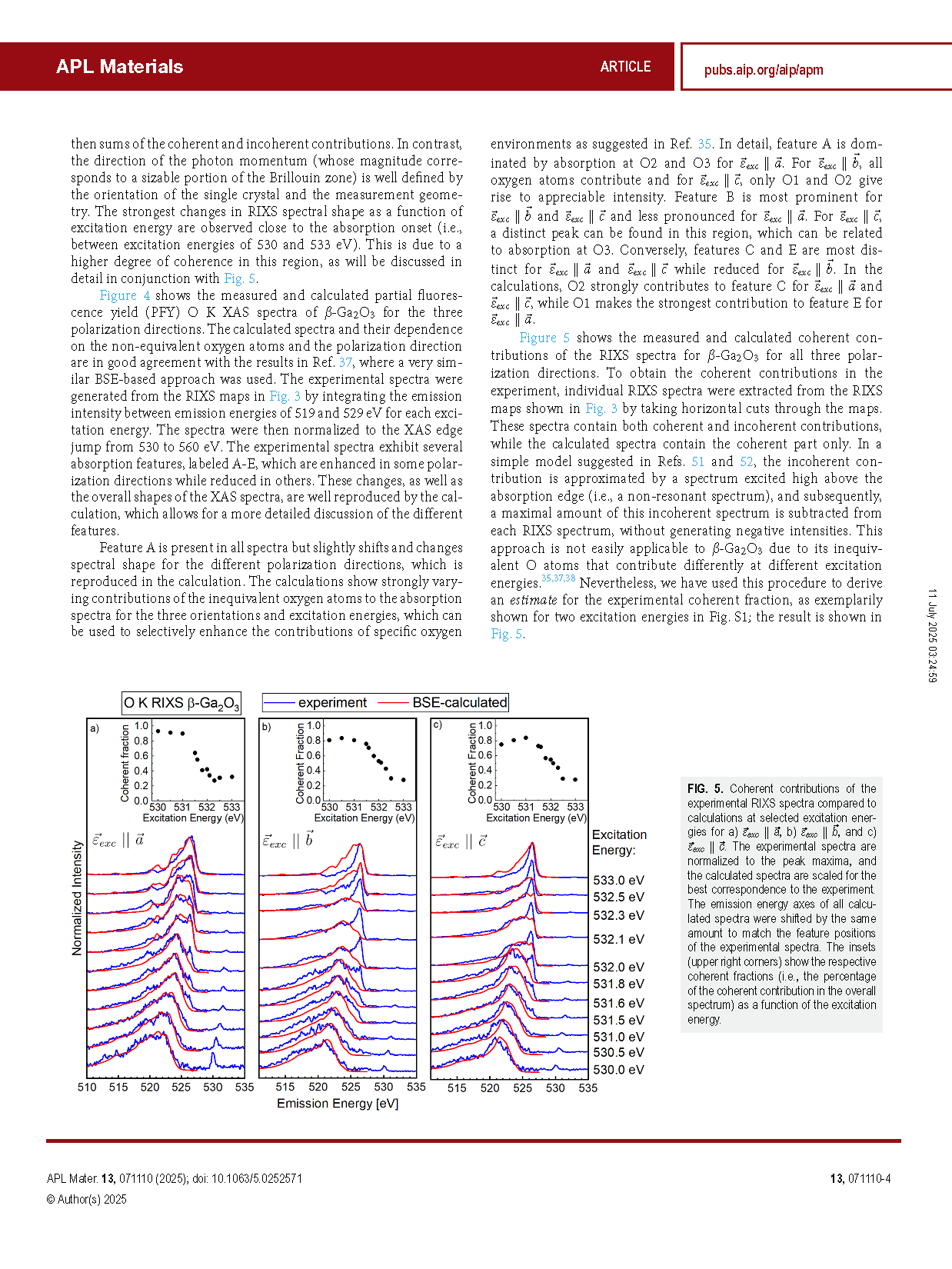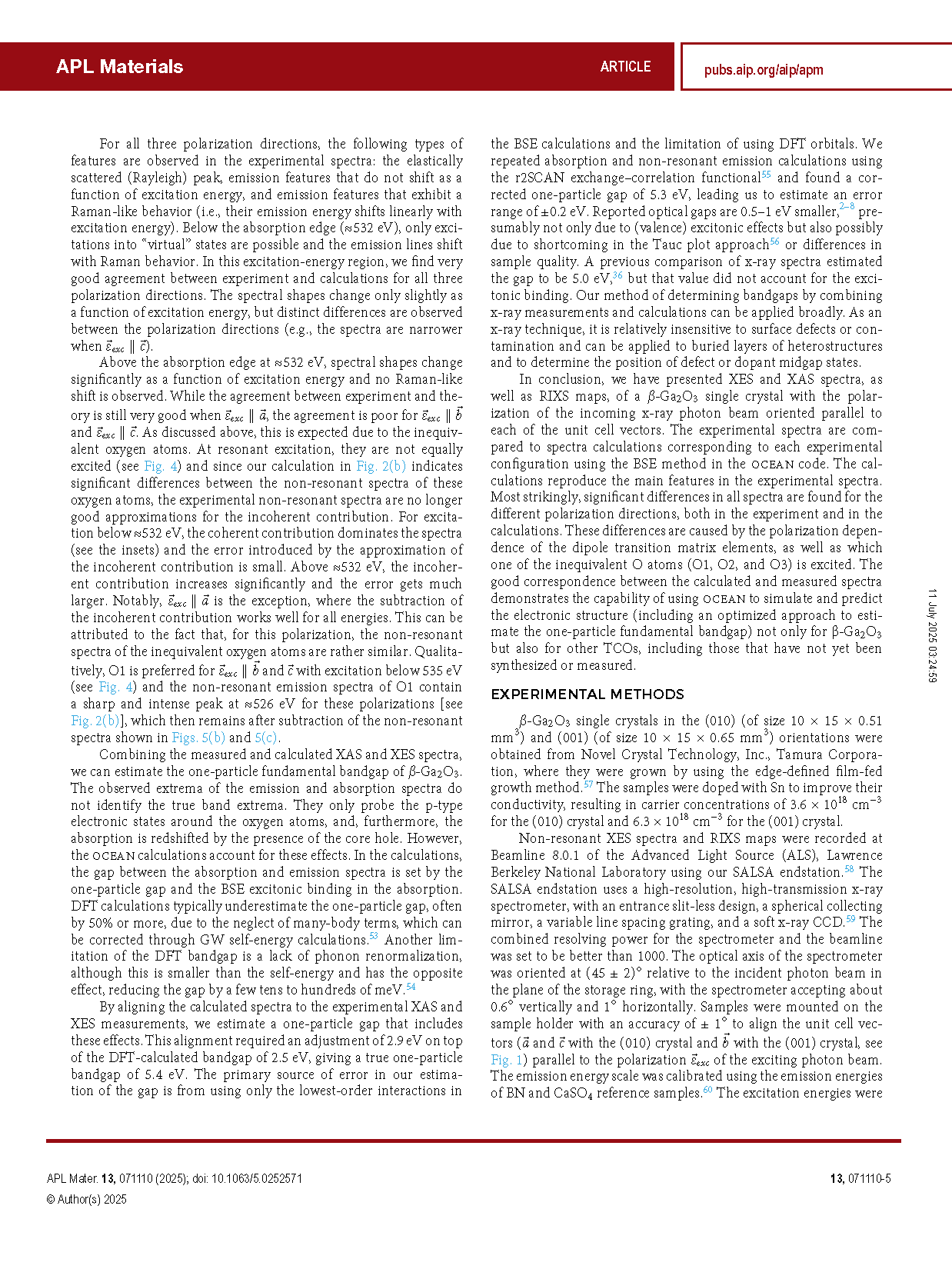
【International Papers】Polarization-dependent resonant inelastic x-ray scattering of β-Ga₂O₃: An experimental and computational study
日期:2025-08-01阅读:205
Researchers from the Karlsruhe Institute of Technology have published a dissertation titled "Polarization-dependent resonant inelastic x-ray scattering of β-Ga2O3: An experimental and computational study" in APL Materials.
Background
Ga2O3 is an ultra-wide bandgap material, with literature bandgap values ranging from 4.4 to 4.9 eV. It can be used as a transparent conductive oxide (TCO), with good electrical conductivity and transparency in the UV–visible light region. Ga2O3 has been used in a wide variety of applications: as a buffer or intrinsically “high-resistive” layer in Cu(In, Ga)Se2 (CIGSe)- based thin-film solar cells, in power electronics, solar-blind UV detectors, gas-sensing devices, catalysts, and spacebased applications. A detailed and fundamental understanding of its electronic structure is crucial for further insight-driven optimization of these (and similar) devices.
Abstract
The bulk electronic structure of β-Ga2O3 single crystals was investigated using oxygen K-edge x-ray emission and absorption spectroscopy as well as resonant inelastic soft x-ray scattering. Spectra were obtained for different orientations of the crystal planes with respect to the polarization vector of the incident x-ray beam. The spectra are analyzed with calculations based on density functional theory and using the Bethe–Salpeter equation in the ocean code to take the core–hole interaction into account. These calculations correctly capture all the main features in the experimental spectra, demonstrating the potential of the approach to predict the electronic properties of similar compounds. We find a pronounced anisotropy as a function of the excitation polarization vector and significant differences in the spectral contributions from the inequivalent oxygen atoms of β-Ga2O3.
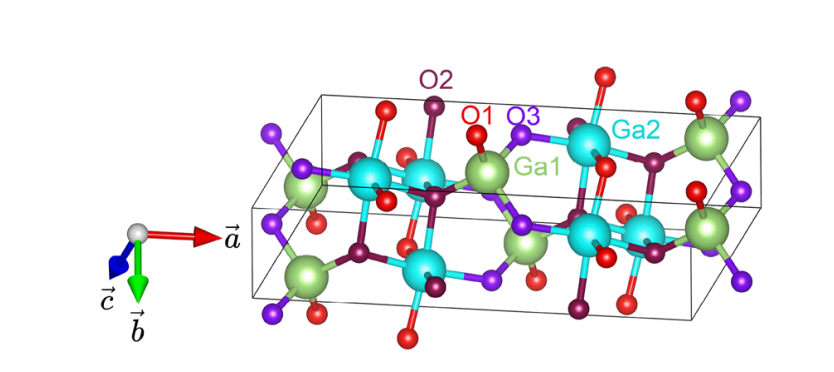
FIG.1 Conventional unit cell of β-Ga2O3 .Tetrahedrally (Ga1) and octahedrally (Ga2) coordinated Ga atoms are represented by green and turquois, respectively. Inequivalent O atoms are represented by red (O1), maroon (O2), and purple (O3). The image was produced using VESTA software.
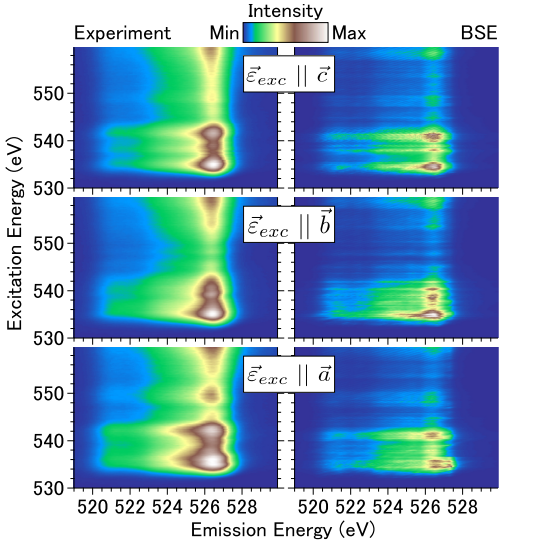
FIG. 2. Experimental (left) and BSE-calculated (right) O K RIXS maps of β-Ga2O3 for the three polarization directions:ε exc ∥ a (bottom),ε exc ∥b (middle), and ε exc ∥ c (top). The color-coded emission energies.
DOI:
doi.org/10.1063/5.0252571

